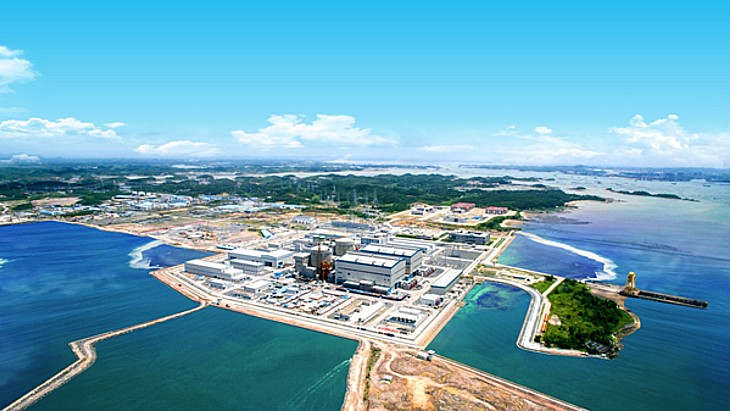Progress and Future Prospects toward Deploying GEN IV reactors as Advanced Nuclear Energy Systems saw a panel of current and past chairs of GIF come together on 28 April to discuss the progress in collaborative R&D made by the forum, and to provide their perspectives on provide their perspectives on the progress made and the prospects for the deployment of Generation IV - or Gen IV - systems.
The GIF was initiated by the US Department of Energy in 2000 and formally chartered in mid-2001. It brings together 13 countries (Argentina, Australia, Brazil, Canada, China, France, Japan, Korea, Russia, South Africa, Switzerland, the UK and the USA), and Euratom - representing the members of the European Union - to work together to develop the research necessary to test the feasibility and performance of fourth generation nuclear systems, and to make them available for industrial deployment.
The six reactor technologies GIF identified for development are: the gas-cooled fast reactor, the lead-cooled fast reactor, the molten salt reactor, the sodium-cooled fast reactor, the supercritical-water-cooled reactor and the very high-temperature reactor. The OECD Nuclear Energy Agency (NEA) provides GIF's technical secretariat.
GIF set itself four "rather audacious" goals for GenIV energy systems - sustainable energy with minimum waste; clear life cycle cost advantages over other energy sources and a level of risk financial comparable to other energy projects; excellent safety and reliability, eliminating the need for off-site emergency response; and proliferation resistance and physical protection - Diane Cameron, head of the NEA's Nuclear Technology Development and Economics Division, said.
The forum's target date for deployment of Gen IV technology - 2030 - is now just around the corner, she said. With the climate change crisis, and the need to replace coal and fossil fuels, deep decarbonisation of hard-to-abate sectors, clean hydrogen generation, desalination technologies, amongst other applications, markets are signalling a demand for simpler, safer, more affordable, and in some cases, smaller nuclear power reactors, she said. But those reactors must be ready in time for deployment.
"There is a window of opportunity open now, but it may close in the 2030s," she said. "There's a clear possibility that 2030 technology decisions in both the public and private sector will be locked in within the next 5-15 years. So there's an urgency to the Generation IV International Forum now."
Changing world
William Magwood, now director general of the NEA, was GIF's first chairman. The forum itself grew from the USA's need to restart its nuclear programme "from nothing" which prompted it to undertake bilateral agreements to work with other countries to work together on projects. This in turn led to a recognition of the value of a global approach to deployment of new reactor technology, and in 2000, as commonalities became clear, the logic of GIF was "immediately apparent", he said.
The world has changed since the forum was set up, Magwood said. GIF was established as a forum for R&D driven by government laboratories and ministries. Over time, the emphasis has shifted towards more industry-driven R&D. This is a future challenge for GIF, he said, but is one the forum will be able to meet.
Opportunities and challenges
Smaller reactors may be the entrance into the market but whatever the technology or size, Gen IV should address the entire fuel cycle, panellists said. Christophe Behar, GIF's vice-chair from 2010 to 2015, said that while Gen IV reactors might at first seem to face strong competition from Generation III reactors, there are a number of reasons why fast neutron reactors may be deployed in preference to existing light-water reactor technology, notably their ability to maximise the nuclear fuel resource base and minimise high-level wastes.
John Kelly, GIF chairman from 2013-2015, said the outlook for the demonstration and commercial deployment of Gen IV technology is "getting better every day", with Gen IV reactors well situated in the market place against a backdrop of worldwide interest in innovation to combat climate change. In addition to the "climate driver", he said, public acceptance and financing would also be needed for successful Gen IV deployment. He called for GIF to become more "public-facing and outward-looking".
Kelly identified project finance as a barrier to be overcome, especially for technology deployment beyond the government-supported demonstration phase. "We need to form partnerships with industry … this can then drive innovation within our programme," he said.
Working with licensing authorities, for example on codes and standards, was also highlighted by panellists as an area for future focus. With hindsight, Magwood said, GIF would have benefitted from an earlier focus on practical codes and standards from the outset. Also, he said, it would have been beneficial to have an earlier focus on how to get to a demonstration of Gen IV technology, although he acknowledged, this had not been practical in the early days of the forum for political reasons.
Francois Gauché, GIF's chairman from 2016-2018, said the forum should now ensure it builds on work it has already started to engage with the younger generation in the nuclear industry, and also connect with new companies, start-ups and entrepreneurs, while Hideki Kamide, GIF's current chairman, said the forum would continue to welcome new members that are interested in developing Gen IV technology.

.jpg)



_92619.jpg)
_84504.jpg)

_58447.jpg)




